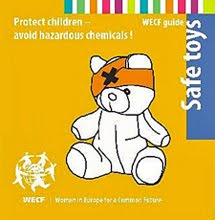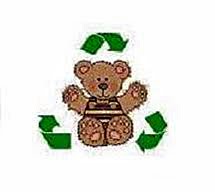 Once the vacations are over and school, sports and other free-time activities start, it seems there is never enough time in the day to just get outside with our children. Enjoying the outdoors with children is a fun, healthy way to spend quality family time. I am a firm believer in getting lots of nature time - anything, as long as it includes plenty of fresh air, surrounded by dirt, plants and TREES.
Once the vacations are over and school, sports and other free-time activities start, it seems there is never enough time in the day to just get outside with our children. Enjoying the outdoors with children is a fun, healthy way to spend quality family time. I am a firm believer in getting lots of nature time - anything, as long as it includes plenty of fresh air, surrounded by dirt, plants and TREES.Naturskyddsföreningen has an on-going campaign for preserving small-forests for the well-being of our children. Forests play an important role in the future of our children and our environment but most of all, when children are spending their playtime outside, it fosters creativity and healthy childhood development, while helping prevent childhood obesity, attention deficit disorder and emotional stress. Through this campaign, you can contribute for the preservation of forests.
And in case you need some tips on how to have outdoor green-fun, here it is:
Explore Nearby Nature
No need for a costly outing – explore your backyard, a local playground or beach. Remember that adventures can be made by keeping it simple - jump in mud puddles, catch snowflakes on your tongue, throw leaves in the air or skip rocks on the water.
Have Fun
Go outside and play! Take a break from chores, schedules and to-do lists. Try not to look at it as one more “should”. Just 15-20 minutes outside is often enough to rejuvenate us and push the “reset” button on our hectic lives.
Set Limits on Screen Time
Don’t be afraid to set time limits on TV, video games, computers and cell phones. Likewise, it’s more than okay to require time spent outdoors each day or week. Don’t let the grumbling deter you – the entire family will reap the benefits of unplugging and getting out the door to explore./connecting with nature.
Encourage Unstructured Play
Kids need unstructured playtime outdoors to explore, discover and use nature on their own terms without grown ups giving all the directions and rules. Stand back and watch where their imaginations and creativity take them.
Slow Down, Relax and Enjoy
Make time for “down time” outdoors. Often we forget to just “be here now” – watch the clouds, lie in the grass or lean against a tree trunk. Have children identify a special ‘sit spot’ that they can return to on their own to unwind.
Expand Your Comfort Zone
Stretch your own comfort level with bugs and worms, rain and mud, snow and cold, darkness and the likes. Your kids will pick up on your squeamishness or discomfort. Let them see you relaxed and enjoying yourself outdoors.
Don’t Be Afraid of Not Knowing the Answers
You don't have to know everything about plants and animals to help your children enjoy them; half the fun is asking questions and being curious. Use your sense of wonder to learn and discover together.
Direct your children's attention – and join in their fun
Research shows that children learn more when someone participates in an experience with them. It's as simple as pointing out trees or touching a leaf with your child; encouraging her or him listen for birds, smell the flowers, or feel the wind or soil.
Go outside and play – together!
Twenty years from now, your child may not remember your driving them to every piano lesson or soccer practice. But you can bet they'll remember climbing a tree, making a snow angle or having a mud fight with you!
Share Your Childhood
Teach your kids the games that you grew up playing – the ones that didn’t require lots of equipment but needed lots of creativity or negotiating. Building forts or fairy houses, flashlight tag, kick the can, pick-up soccer, backyard relay races, sardines and the likes.
Bring the Outdoors In
Have a “wonder tray” on permanent display where kids can display all those nature treasures that just have to come inside. Keep magnifying glasses nearby. Have a bird, animal or weather watching station at the family room window with binoculars, field guides and a journal for recording observations.
Bring the Indoors Out
Go outside to do the things you usually do inside – eating meals, reading books, drawing, or painting projects. Bring the “indoor” toys outside and let your kids use them in new ways.
Be Flexible and Spontaneous
It’s hard to stick to a plan when you’re exploring and making discoveries. Be willing to let your kids take the lead, wherever that may be. Their sense of wonder will most likely lead to many “teachable moments”. Keep a blanket and extra clothes in the car, to help take advantage of spontaneous outdoor opportunities – throwing rocks as the ice is breaking, catching a beautiful sunset or finding a new trail.
Read more...




























